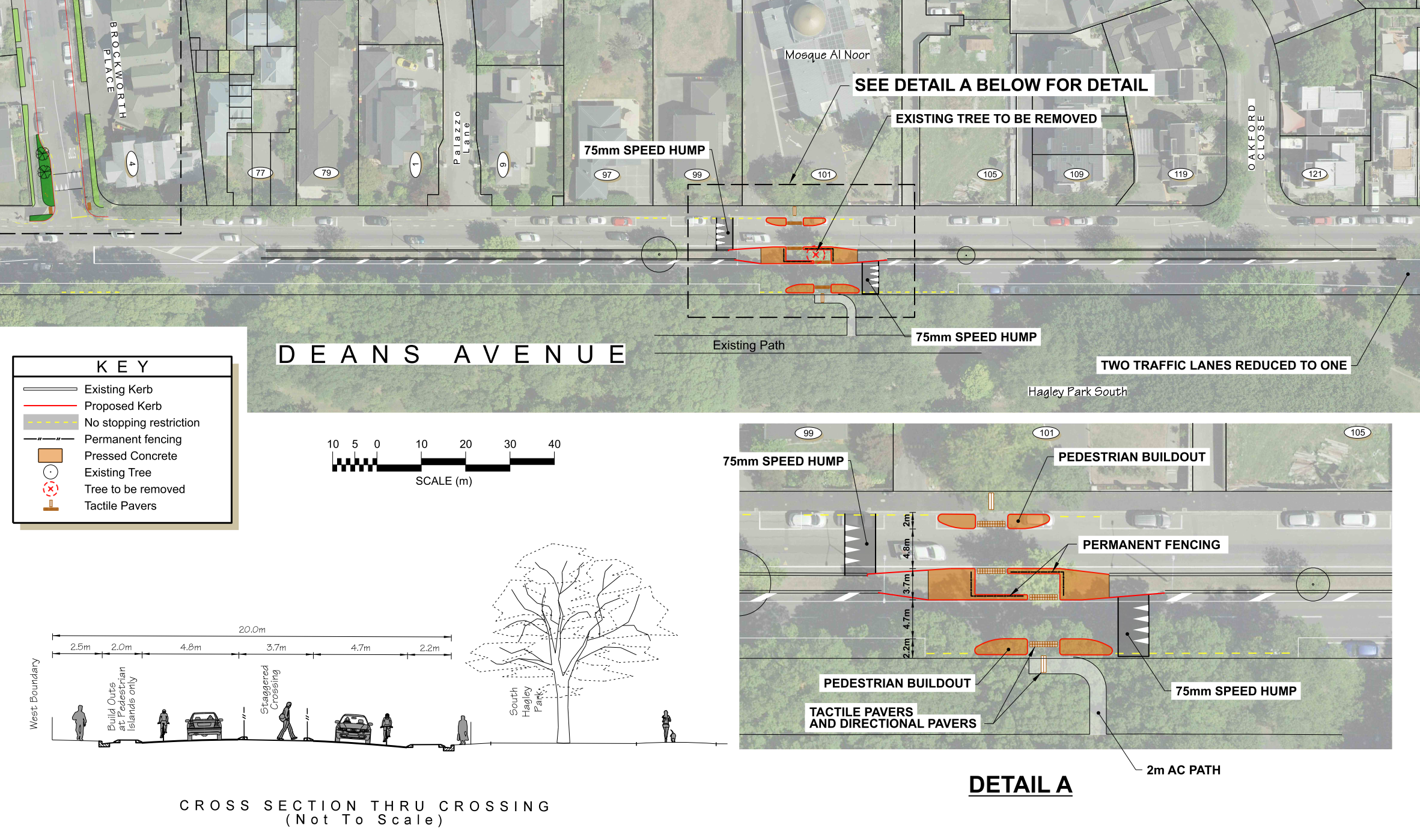
For several years, concerns have been raised about the safety of pedestrians making their way across Deans Ave when visiting Al Noor Mosque.
This has led to calls for a safe pedestrian crossing to be installed on the busy thoroughfare.
The Waipuna Halswell-Hornby-Riccarton and Waipapa Papanui-Innes-Central community boards each have jurisdiction over one side of Deans Ave, with Waipuna in charge of the western, northbound side and Waipapa the eastern, southbound side.
At a joint video meeting on March 27, both boards approved a new pedestrian crossing near the mosque, but only Waipapa supported the installation of speed humps.
The decision means the $590,000, Government-funded crossing will have speed humps on the narrowed southbound lane but none on the single lane heading north.
Why are community board boundaries in the centre of roads?
Community board areas for the city council combine three wards, except for Banks Peninsula Ward which has its own board.
City council head of community support and partnerships John Filsell said the council is required by law to draw ward boundaries based on Stats New Zealand ‘meshblocks’ – the smallest geographic units used to report statistical data.
All urban meshblock boundaries are in the centre of roads, while in rural areas they typically align to natural geographic features such as rivers and valleys.
The Local Government Commission (LGC) gives final approval to any ward boundaries drawn by councils.
An LGC spokesperson said the commissioners do not see any benefit to drawing boundaries along one side of a road, instead of in the middle.
“We are not aware that the ‘Deans Ave’ type of issue is a widespread one. As this has not been a widespread issue, we have not considered solutions.”
The spokesperson said there is a method district and city councils use to resolve differences when boundaries are split for a road.
“It is common for the councils involved to enter into a memorandum of understanding about the management of boundary roads so that there is a policy setting out how such issues would be dealt with.”
The most common way to change ward boundaries is during representation reviews, held every six years, but Christchurch will likely not have another until 2027.
Mayor Phil Mauger said the city council could get advice on the issue of split jurisdiction during the next review.
“It is important that we have a commonsense approach so we avoid muddled decisions.”
Alternatively, some board members and councillors believe split decisions should be sent to the council table either automatically or on a case-by-case basis.
“I think when there are different views between boards, it should probably be decided on by council,” said Waipuna deputy chair Helen Broughton.
What went wrong at the meeting?
Some members have said the joint meeting should have been held in person.
Waipapa board member and Innes Ward candidate Ali Jones said at times it was “hard to understand what was going on” over the video chat.
Deputy Mayor Pauline Cotter, who forwarded the motion to approve the safety measures on the Waipapa side, agreed the meeting would have been better in person.
Filsell said holding the joint meeting via video link was not “usual practice.”
The online format was used to ensure Waipapa members could attend a planned information session afterwards – which was ultimately cancelled when the Deans Ave discussion ran long.
Some members were also frustrated other design options were not fully prepared by council staff.
If Waipapa had voted for anything other than option one, staff would have needed more time to investigate, delaying the project.
Jones said she had been “bamboozled” by the situation.
“It seemed extremely rushed and procedurally didn’t seem to make sense.”
A city council spokesperson said option two, which would have retained the current two-lane layout, was not designed in detail but had been assessed for pros and cons, as well as cost and safety implications.
 “If the board had selected this option, it would have been designed in full, and then staff would have returned to the board for detailed traffic resolutions.”
“If the board had selected this option, it would have been designed in full, and then staff would have returned to the board for detailed traffic resolutions.”
Fully developing alternative options also increased project costs, the spokesperson said.
“For many projects, staff try to manage overall project costs by not fully developing alternative options if there is a low chance they would be selected.”
What happens next?
Construction on the safety upgrades has been scheduled for later this month to coincide with the resealing of Deans Ave.
Riccarton Ward city councillor Tyla Harrison-Hunt supported the safety measures, and also got the Waipuna board to approve a pedestrian and traffic movement study.
While Waipuna did not approve speed humps for now, they agreed to design their side of the crossing so humps could be added later, if proven effective on the Waipapa side.













